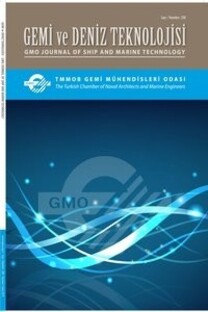PID Control of Humidity and Temperature Exchange in a Ship
Simulink, HVAC, PID control
___
- Araki, M. Control Systems, Robotics, and Automation, Volume II. Atkinson, G. V. and Martino, G. R. (1989). Control of Semiconductor Manufacturing Cleanrooms, ASHRAE, CH-89-1-1, pp. 477-482. Başer, A. (2006). Comparission of Energy Transportation Ways at Air Conditioning Systems, MSc. Thesis, Mechanical Engineering, Sakarya University. Cherchas, D. B. (1985). A Direct Digital Control Algorithm for Control of a Single Environmental Space, ASME Trans., Vol. 107, pp. 324-331. Çelikel, H. K. (2006). Fuzzy Logic Tuned PID Control of Vehicle Suspension Systems, MSc. Thesis, Mechanical Engineering, Istanbul University. Dexter, A. L. and Haves, P. A. (1989). Robust Self-Tuning Predictive Controller for HVAC Applications, ASHRAE, VA-89-1-3, pp. 431-438. House, J. M., Smith, T. F. and Arora, J. S. (1991). Optimal Control of a Thermal System, ASHARE, IN-91-16-1, pp. 991-1001. Kamimura, K. et. al. (1994). CAT (Computer-Aided Tuning) Software for PID Controllers, ASHRAE Trans., Research, 3754, pp. 180-190. Kaya, A. (1976). Analytical Methods for Controller Design, ASHRAE Journal Koçal, T., Muğan, A ve Yurtseven, A. Multi Zones HVAC Systems’ Control in Ships with Simulink Application, Journal of Maritime Transport and Engineering, Vol:2 1, pp. 13-20. Koçal, T. (2012). Multi Zones HVAC Systems’ Control in Ships, MSc. Thesis, Mechatronic Engineering, Istanbul Technical University. Krakow, K. L., Lin, S. ve Zeng, Z. S. (1995a). Temperature and Humidity Control During Cooling and Dehumidifying by Compressor and Evaporator Fan Speed Variation, ASHRAE Trans: Research, 3859, pp. 292-303. Krakow, K. L., Lin, S. ve Zeng, Z. S. (1995b). Analytical Determination of PID Coefficents for Temperature and Humidity Control During Cooling and Dehumidifying by Compressor and Evaporator Fan Speed Variation, ASHRAE Trans: Research, 3863, pp. 343-354. Öznergiz, E. (1998). The Optimal Control of a HVAC System by Microcomputer, MSc. Thesis, Mechanical Engineering, Istanbul Technical University. William, T. P. (1992). Integrating Building Automation and Control, ASHRAE Journal, 54-58. Zhang, Y., Baber, E. M. and Wood, H. C. (1993). Analysis of Stability of Livestock Building Heating Ventilation Control System, ASHRAE Trans., 3715, pp. 237-244.
- ISSN: 1300-1973
- Yayın Aralığı: 2
- Başlangıç: 1955
- Yayıncı: TMMOB Gemi Mühendisleri Odası
Numerical Investigation of the Effect of Bilge Keel Width on Roll Damping
PID Control of Humidity and Temperature Exchange in a Ship
Analysis of Occupational Accidents and Risk Factors Occurred on Turkish Flagged Ships
Mathematical Modeling of the Ships’ Six-Degree-of-Freedom Motions
Recent Developments in Maritime Sector and Reflections to Turkey
